Misused Data in Austin Plastic Bag Analysis
January 10, 2012
Bob Gedert, Director
Solid Waste Services Department
City of Austin
1520 Rutherford Lane
Austin, TX 78767-1088
Bob,
I led the design of and was project manager for Keep America Beautiful's 2009 National Litter Study. I read your Plastic Bag Cost Findings and Clarifications memorandum, dated January 12, 2011, and would like to call to your attention misused data from our study.
Specifically, page three of your memo indicates that plastic bags constitute 2.2 percent of litter. The 2009 National Litter Study found that plastic bags of all types comprise only 0.6 percent of litter. Percentages for categories that constituted minute portions of roadside litter, such as plastic bags, were not addressed in the 2009 National Litter Study.
Thus, the wrong data point was used in this memo's analysis. The mix-up may stem from Figure 3-3 (Top 10 Aggregate Litter Items, All U.S. Roadways) on page 3-3 of the KAB 2009 National Litter Study. That table lists “Other Plastic Film” as 2.2% of all litter. Note that this category specifically excluded plastic bags.
You have overstated the amount and cost impact of plastic bags by about 366 percent. Additionally, since retail plastic bags only constitute a portion of the study's plastic bag category (dry cleaner bags and trash bags are also in this category), even 0.6 percent for retail plastic bags is an overstatement.
I believe this type of misleading data point would impact the debate in Austin and ask that you correct your memo to reflect that plastic bags only constitute 0.6 percent of litter.
The relevant definitions that were used for the 2009 study were:
Plastic bags: Plastic trash bags (empty or full), plastic grocery bags, dry cleaning bags and other merchandise shopping bags used to contain merchandise to transport from the place of purchase, given out by the store with the purchase (including dry cleaning bags).
Other plastic film: Plastic film used for purposes other than packaging. Examples include agricultural film (films used in various farming and growing applications, such as silage greenhouse films, mulch films, and wrap for hay bales), plastic sheeting used as drop cloths, and building wrap.
The percentage of each found in litter was:
- Plastic bags: 0.6%
- Other plastic film: 2.2%
The plastic bags category, which included trash bags (empty or full), grocery bags and dry cleaning bags, constituted 0.6% of total litter. For that reason, this category was not in the top 10 aggregate litter items and not included in Figure 3-3.
I hope this information has been helpful. Feel free to contact me if I can be of help with your efforts.'
Best,
Steven R. Stein, Principal
Environmental Resources Planning, LLC
624 Main Street, Suite B
Gaithersburg, MD 20878-6439
Phone: (240) 631-6532
Cell: (202) 236-1580
www.erplanning.com

